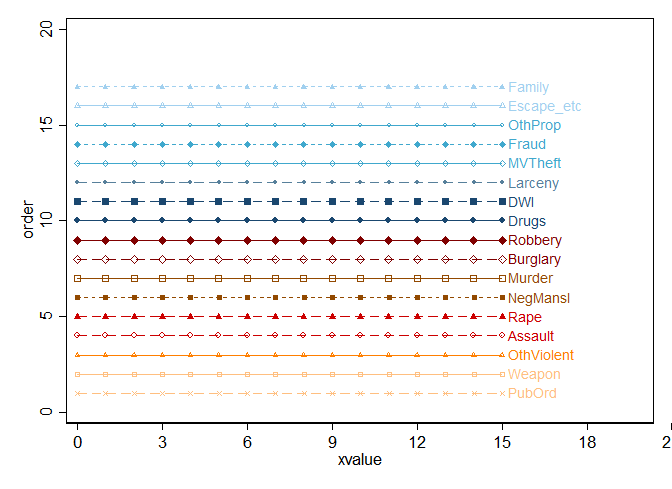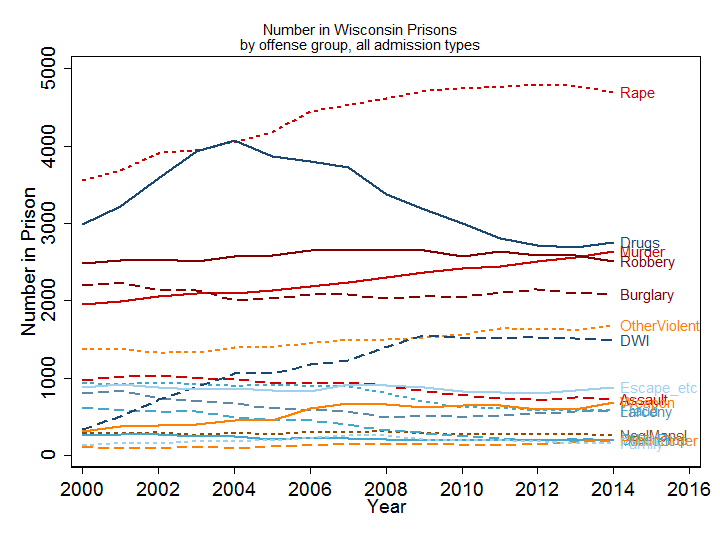A few readers may be interested in how I used Stata to create the color scheme for the offenses in the graphs I’ve posted recently. This is a “stats nerd” post that assumes the reader uses Stata, a statistical package. Everybody else may wish to give it a pass. Some
Read more


